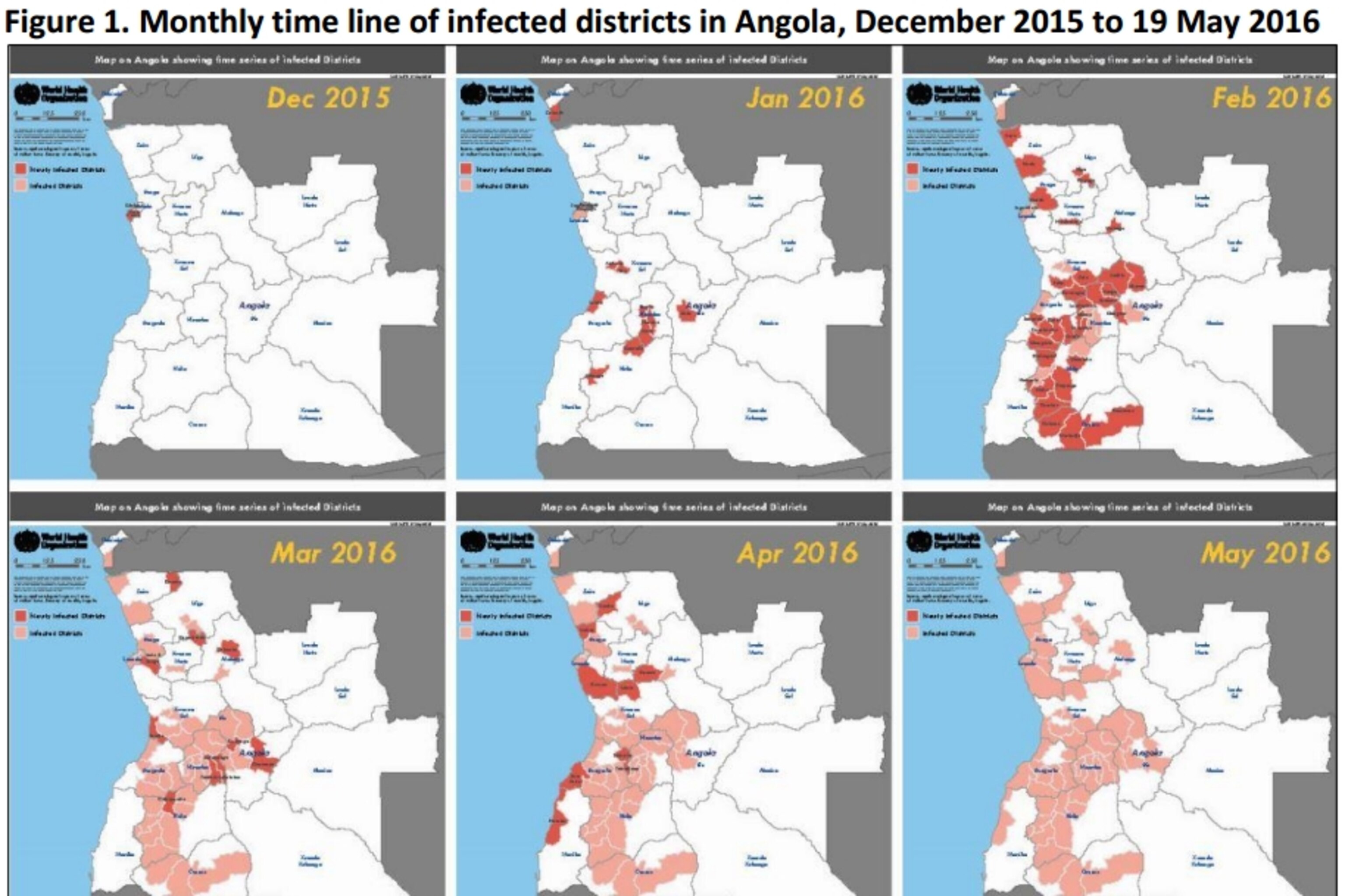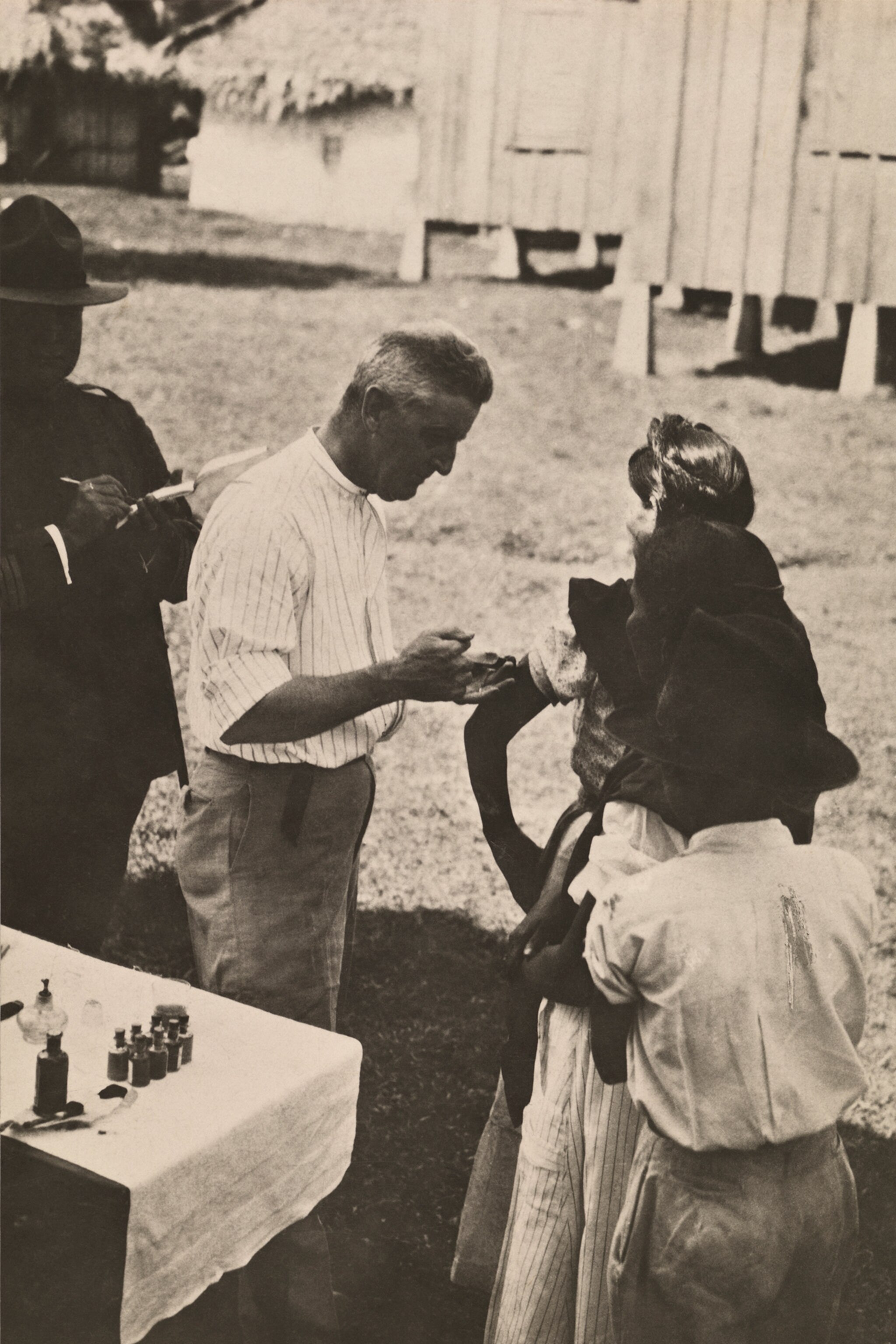
Africa’s Yellow Fever Outbreak is a Glimpse of Our Connected Future
Zika virus has been earning all the headlines, because it is already affecting Americans—including 300 pregnant women move into U.S. mosquitoes
But outside the United States, another mosquito-borne disease is attracting the world’s attention, and it may predict more than Zika does about how epidemics will move around the world in the future. The disease is yellow fever, the epicenter of the outbreak is Angola, and the force that could push it around the globe is Chinese investment in the developing world.
The Angolan outbreak began in December and is large: more than 2,400 cases and 298 deaths, according to the latest report
But what has some researchers unusually alarmed is that there are 11 cases in China
“Approximately two billion people live in
Aedes aegypti
-infested countries in Asia,” Sean Wasserman, Paul Anantharajah Tambyah, and Poh Lian Lim, researchers from South Africa and Singapore, say in a paper published online in May in the International Journal of Infectious Diseases. “The prospect of a yellow fever introduction into this unvaccinated population poses a major global health threat,” they write.
Yellow fever is a persistent problem in West Africa, where the virus cycles between monkeys and mosquitoes and spills over to humans. That happens first in villages at forest edges, and then in cities as infected people carry the virus to urban mosquitoes. (These happen to be the same kinds of mosquitoes that transmit Zika, and also chikungunya and dengue: voracious day-biters that breed in pools of water as small as a bottle cap, and attack people not only outdoors but inside houses.)
A vaccine prevents yellow fever, but only about 70 percent of Angolans receive it, not enough to create the herd immunity that would prevent an outbreak from taking hold.
That is a serious gap, because unlike the other diseases carried by
Aedes
mosquitoes—which except for the birth defects of Zika mostly cause mild illnesses—yellow fever can kill. As many as one in four of those who develop symptoms go on to have liver and kidney failure, jaundice (which gives the disease its name) and bleeding, and one in four of those victims die.
Yellow fever has never taken hold in Asia. Lack of familiarity with the disease may explain why the 11 infected people who returned to China were not vaccinated, despite Chinese regulations saying they should have been.
They probably have a lot of company: Angola is one of China’s biggest investment targets in Africa, for cropland and for energy. In 2009, according to the Centre for Chinese Studies
Because the continents harbor the same mosquito species—Singapore, where Tambyah and Lim work, wages a constant battle against dengue—the researchers suggest that just one unknowing traveler carrying yellow fever virus in their blood could spark a chain of transmission. That could trigger what The Economist warned in an editorial earlier this month would be “ a preventable tragedy after it arrived in India
The authors of the new paper say: “The current scenario of a yellow fever outbreak in Angola, where there is a large community of non-immune foreign nationals, coupled with high volumes of air travel to an environment conducive to transmission in Asia, is unprecedented in history… The growing number of imported cases in China shows how critical it is to recognize this risk now in order to take adequate preventive action so that a global catastrophe can be averted.”
The action that is most needed is vaccination. Monday marked the start of the World Health Assembly, the annual conclave of member states of the World Health Organization. In the opening meeting, director general Dr. Margaret Chan delivered what she called a “stern warning” on failures to vaccinate adequately. (Chan’s term ends in June 2017, so she may have felt safe being blunt—though she did not name names.)

“The world failed to use an excellent preventive tool to its full strategic advantage. For more than a decade, WHO has been warning that changes in demography and land use patterns in Africa have created ideal conditions for explosive outbreaks of urban yellow fever,” she said
Because of the Angolan outbreak, yellow fever vaccines are in short supply worldwide, as Kai Kupferschmidt reported in Science declined to rank in JAMA two weeks ago
But that may not be enough. In its editorial, The Economist did the vaccine math:
Should yellow fever come to Asia, some experts reckon that over 100m people living in large, well-connected cities would need to be vaccinated. That would rapidly exhaust the world’s supply of vaccine, even if only a fifth of a dose (thought to be enough to confer immunity to adults) were administered to each person who needed it. In the long term, if the disease establishes itself in Asia’s jungles, over 1 billion more people could be at risk…
The world has already failed to thwart yellow fever effectively in Africa. That threatens to put millions more lives at risk.
Related Topics
Go Further
Animals
- Octopuses have a lot of secrets. Can you guess 8 of them?
- Animals
- Feature
Octopuses have a lot of secrets. Can you guess 8 of them? - This biologist and her rescue dog help protect bears in the AndesThis biologist and her rescue dog help protect bears in the Andes
- An octopus invited this writer into her tank—and her secret worldAn octopus invited this writer into her tank—and her secret world
- Peace-loving bonobos are more aggressive than we thoughtPeace-loving bonobos are more aggressive than we thought
Environment
- This ancient society tried to stop El Niño—with child sacrificeThis ancient society tried to stop El Niño—with child sacrifice
- U.S. plans to clean its drinking water. What does that mean?U.S. plans to clean its drinking water. What does that mean?
- Food systems: supporting the triangle of food security, Video Story
- Paid Content
Food systems: supporting the triangle of food security - Will we ever solve the mystery of the Mima mounds?Will we ever solve the mystery of the Mima mounds?
- Are synthetic diamonds really better for the planet?Are synthetic diamonds really better for the planet?
- This year's cherry blossom peak bloom was a warning signThis year's cherry blossom peak bloom was a warning sign
History & Culture
- Strange clues in a Maya temple reveal a fiery political dramaStrange clues in a Maya temple reveal a fiery political drama
- How technology is revealing secrets in these ancient scrollsHow technology is revealing secrets in these ancient scrolls
- Pilgrimages aren’t just spiritual anymore. They’re a workout.Pilgrimages aren’t just spiritual anymore. They’re a workout.
- This ancient society tried to stop El Niño—with child sacrificeThis ancient society tried to stop El Niño—with child sacrifice
- This ancient cure was just revived in a lab. Does it work?This ancient cure was just revived in a lab. Does it work?
- See how ancient Indigenous artists left their markSee how ancient Indigenous artists left their mark
Science
- Jupiter’s volcanic moon Io has been erupting for billions of yearsJupiter’s volcanic moon Io has been erupting for billions of years
- This 80-foot-long sea monster was the killer whale of its timeThis 80-foot-long sea monster was the killer whale of its time
- Every 80 years, this star appears in the sky—and it’s almost timeEvery 80 years, this star appears in the sky—and it’s almost time
- How do you create your own ‘Blue Zone’? Here are 6 tipsHow do you create your own ‘Blue Zone’? Here are 6 tips
- Why outdoor adventure is important for women as they ageWhy outdoor adventure is important for women as they age
Travel
- This royal city lies in the shadow of Kuala LumpurThis royal city lies in the shadow of Kuala Lumpur
- This author tells the story of crypto-trading Mongolian nomadsThis author tells the story of crypto-trading Mongolian nomads
- Slow-roasted meats and fluffy dumplings in the Czech capitalSlow-roasted meats and fluffy dumplings in the Czech capital
- Want to travel like a local? Sleep in a Mongolian yurt or an Amish farmhouseWant to travel like a local? Sleep in a Mongolian yurt or an Amish farmhouse